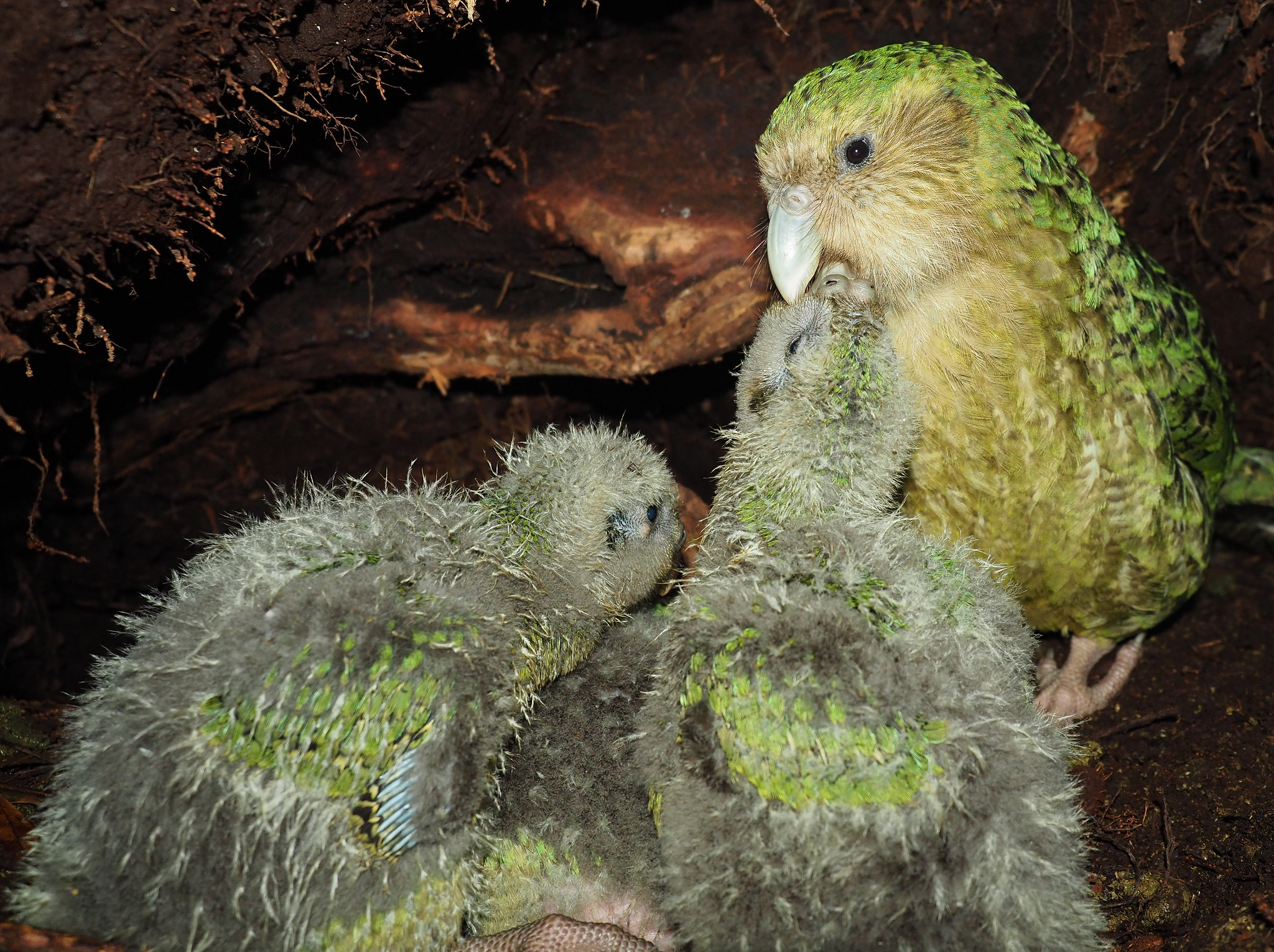
Rakiura – One of the world’s rarest birds, the kākāpō, is having a bumper breeding season in New Zealand, Predator Free NZ says.
As of Valentine’s Day, conservationists have seen mammoth mating sessions, super-sized clutches, and reclusive bachelors getting back in the game.
2022 has been one of the most successful kākāpō breeding seasons to date, which is a huge relief, for the moment, for the much-loved, critically endangered bird.
With only 201 individuals left in existence, every breeding season is crucial for the critically endangered kākāpō.
Right now, Aotearoa is close to the middle of kākāpō breeding season. Mating is more or less done and dusted. Most eggs have been laid.
Mothers are busy incubating their (sometimes fake) eggs. And the first fuzzy chicks have hatched.
As of Valentine’s day 2022, 131 eggs have been laid (that are known), 67 have been confirmed as fertile, and 12 chicks have hatched.
All going well, there could be between 30 to 50 new fledglings this season.
How does this compare to previous years? 2019 is a hard year to top – and stands as the most successful breeding season on record, resulting in 71 fledglings.
The Department of Conservation’s oldest known female bird, Nora, has been giving it her all to ensure the species survival. This year she has outdone herself with her dedication, mating with two males in one night, for an impressive total time of over 90 minutes.
Looking to the males, Ralph is a returnee to the kākāpō dating scene after not having mated since 1999.
On the other end of the spectrum, there have been some very successful males. Kōmaru bred for the first time in 2019 and produced an incredible 10 chicks that season. This year he’s mated with eight different females, making him now one of the most sought after males on his island.
Kōmaru might become a victim of his own success, with talk of shipping him off to another island – to let some other males have a better chance and keep the population genetically diverse.
Another pleasant surprise for the year has been some very large clutch sizes. A standard clutch is two to three eggs. Andrew reports that this year the team have seen several clutches with four eggs. And kākāpō Yasmine even delighted the team with a clutch of five eggs, although these were infertile.
Kākāpō don’t breed every year. Their breeding seasons are dependent on mast years.
Masting is a phenomenon where all the plants of one species produce lots of fruit at the same time. Masting tree species often don’t produce fruit every year, instead fruiting in vast quantities every two to six years.
Kākāpō’s breeding food source in southern New Zealand is the rimu tree – and this season rimu seed counts have been very high.
The native birds are largely scattered across two predator-free islands, Pukenui (Anchor Island) and Whenua Hou (Codfish Island).

